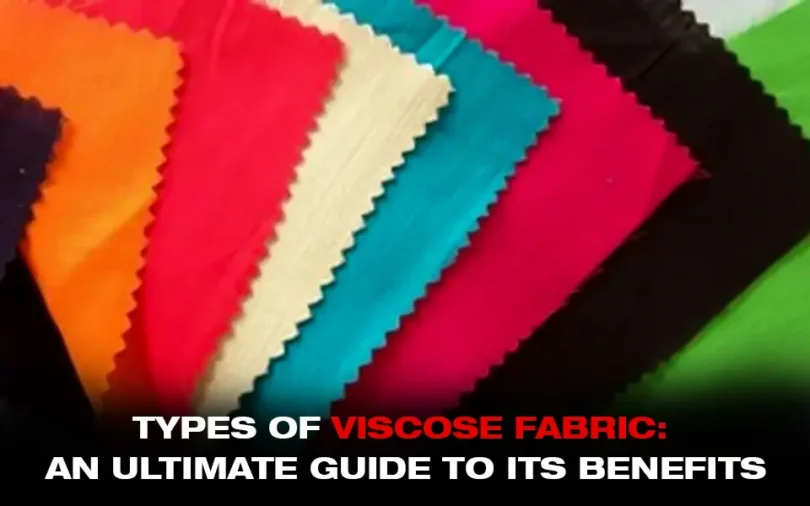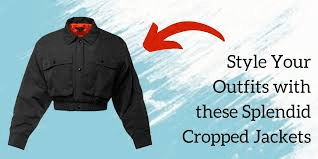Many different materials are used to make clothes and other essential items to make life more comfortable and easy. From the start to now, and, of course, over time, the techniques and innovation have been too fast and far. However, making the proper materials still sets another remarkable level where no one can break it down. If we consider many things, we realize that nature has given us a lot of beneficial sources and other blessings. From all of them, we have gained a lot of benefits and are still in search of making more. Crafting your living comfortably and luxuries is not bad. But selecting the kind that balances your lifestyle smartly is quite tricky.
Apart from all these things, because it is a fact of life. But, still, the first thing that always wins is your sense of dress and your pickup of clothing materials, which leave a bad or good impact on your fashion life. There are a lot of materials that could be manufactured or obtained naturally. There are many types, sizes, and textures of materials used to make the accessories. And other clothing items to make your lifestyle better and more comfortable. Every material has its properties, pros, and cons because it comes from natural sources.
While some have a stigma, others are widely utilized, and some are loved worldwide. One of the well-known and well-demanded materials in the textile industry is Viscose Fabric. It is as delicate as silk but inexpensive, simpler, and the most skin-friendly material.
In this detailed blog, you will collect every kind of information regarding viscose fabric: its production process, the pros, its application, and many more unknown factors you were surprised to learn about. So, please stay connected with us until the end of the topic!
What is Viscose Fabric?
There is a short viscose fabric definition. Viscose is a semi-synthetic fibre-made fabric from natural resources, including wood, pulp, etc. It belongs to the Rayon family. The Viscose fabric is one of the three rayon types, including Modal Lyocell and Viscose. It is often used as a silk alternative due to its soft, smooth, and breathable texture. It costs significantly less than other materials, making it a popular choice among all the designers. Most designers prefer to buy Viscose to create fashionable and comfortable wear, accessories, and even industrial products.
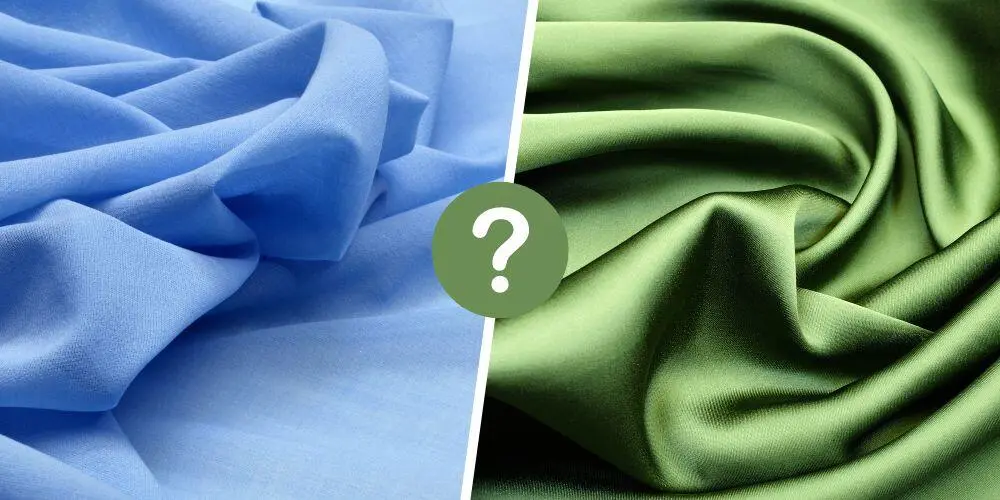
Let’s move to the next page, where we open the history of Viscose, who made it, how Viscose was invented, and what makes it so different in quality and popularity.
Where’s Viscose Fabric First Comes From?
There is no similar invention process for this luxurious fabric because it is not simple to find an alternative. Because natural is natural, and of course, you are trying to make something like this, so you face the troubles. Well, this fabric has its roots in the 19th century, when scientists started searching for a material that could be an alternative to silk. At that time, silk was too expensive, and the second reason was that it could not be produced in large quantities.
In 1883, a French chemist named Hilaire de Chardonnet and Auguste Delachaux created the first version of artificial silk using nitrocellulose. But it turned out to be super flammable, making it unsafe. A few years later, in 1892, three English scientists. Known as Charles Cross, Edward Beadle, and Clayton Beadle came up with a much safer method, which was treating wood pulp (cellulose) with chemicals. That’s how viscose fabric was born. It started showing up in clothing in the early 1900s, giving people the luxurious look of silk at a much more affordable price that did not affect their budgets. It changed the fashion game. At that time, it was the most luxurious fabric and used for many apparel and accessories.
How was Viscose Fabric Made?

Many chemicals are used for viscose production, including sodium hydroxide and carbon disulfide. However, Viscose is also created from trees because it is semi-synthetic. The name “Viscose” comes from the thick, syrupy solution of cellulose used to make the fiber during production.
A Cycle of Making The Viscose
There are a few simple steps that define the production process for Viscose.
- Cellulose Extraction
Wood pulp is taken from trees like beech, pine, or bamboo to get the natural cellulose fibers.
- Alkali Treatment
The cellulose is soaked in a sodium hydroxide (alkali) solution to clean and break it down.
- Aging & Xanthation
The treated cellulose is left to age and then merged with carbon disulfide to form cellulose xanthate.
- Dissolving into Viscose
The cellulose xanthate is dissolved in more sodium hydroxide, creating a thick, honey-like liquid called Viscose.
- Spinning into Fibers
The viscose solution is pushed through tiny holes into a chemical bath, where it turns into solid fibers that are then threaded.
How Many Types of Viscose?
There are several types of viscose fabric, each designed for specific uses or with different properties. Here are the main types of viscose fabric:
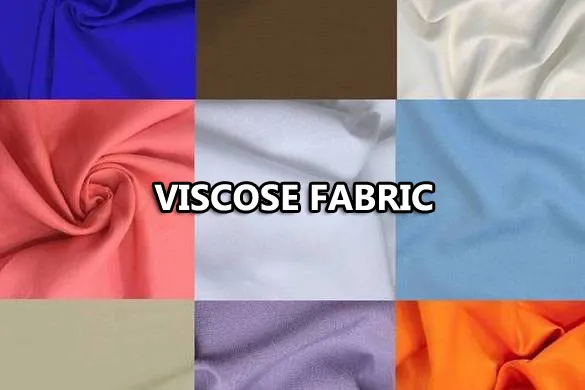
- Regular Viscose (Rayon)
The most common type, soft and breathable, often used in clothing like shirts, dresses, and linings.
- Modal
A stronger, smoother version of Viscose, made from beech tree pulp. It’s more durable and often used in underwear, activewear, and soft loungewear.
- Lyocell (Tencel)
An eco-friendly type made with a closed-loop process, it’s soft, moisture-wicking, and great for sensitive skin. It’s used in both clothing and bedding.
- High Wet Modulus (HWM) Rayon
A more durable type of Viscose that retains strength even when wet. Often used in towels and sportswear.
- Cuprammonium Rayon
A finer and silkier type of Viscose made using copper and ammonia. It’s less common today due to environmental concerns.
The Common Uses of Viscose Fabric
Viscose fabric is widely used across different industries due to its soft texture, elegant drape, and affordability.
- In Fashion:
It’s normally found in dresses, blouses, skirts, linings, and lightweight jackets that offering a silk-like appearance without the high cost. When blended with other fibers. It’s also popular in activewear.
- In-Home Textiles:
Viscose fabric is used for curtains, bed linens, cushion covers, and upholstery due to its capacity to hold vibrant colors and prints. More interestingly, The Viscose is used in hygiene products like wipes and medical gauze. Its versatility and amenity make it a top choice in both everyday clothing and interior design.
The Main Characteristics of Viscose Fabric
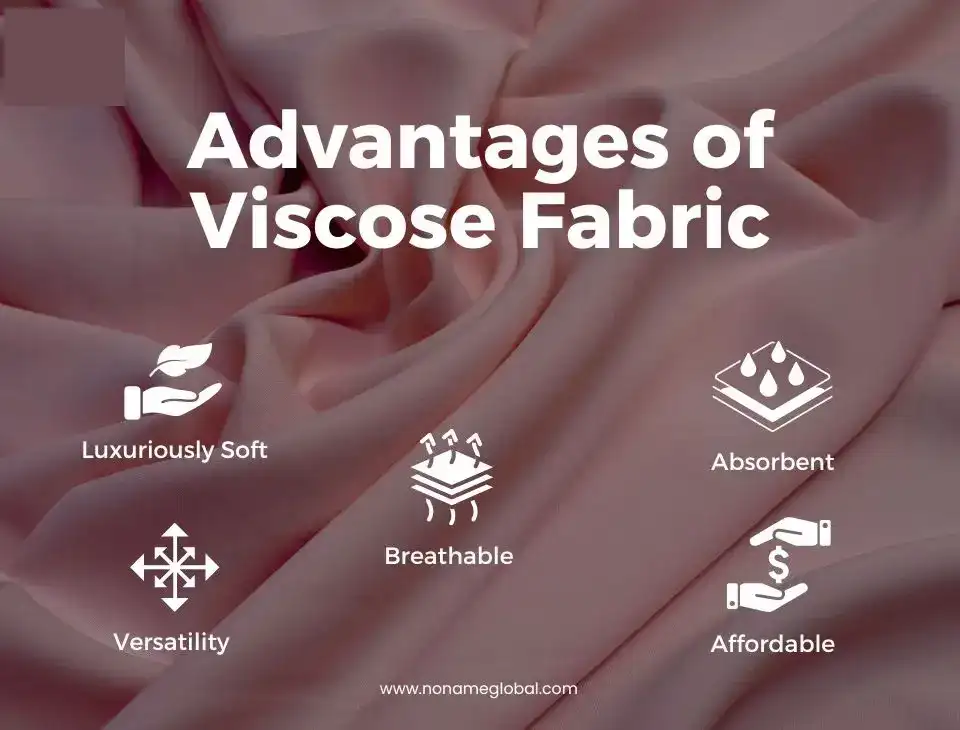
We all know that Viscose is a luxurious fabric that stands out for its unique combination of highlighting features, including:
- Softness:
It is soft, the same as silk and satin, and also has the feel of other expensive fabrics.
- Breathable:
Because Viscose is a synthetic material, it is incredibly breathable, so you can easily make it perfect for warm weather.
- Lightweight:
Viscose is the lightest fabric, providing a comfortable and relaxing feeling throughout the day. It is also considered cotton in weight.
- Best Absorbent:
The Viscose does not trap heat, so, making it ideal for sportswear. It greatly absorbs water, body oil, and perspiration.
- Moisture Wicking:
Rayon viscose is the best and least moisture-wicking of all semi-synthetic textiles. If the climate is hot with low humidity, this Viscose is an excellent option.
- Vibrancy:
This excellent dye uptake gives the fabric a vibrant, long-lasting dye content.
- Smooth Texture:
Viscose feels silky, smooth, and gentle against the skin, just like silk fabric.
- Drape:
This Viscose produces and provides classy apparel, furniture, and other accessories.
- Weather-Friendly:
The viscose fabric for summer or winter is the ideal option that changes according to the weather conditions. It provides a cool and calm feeling while the weather is hot. In winter, your skin is never rough or harsh, even in rough weather conditions.
The Key Benefits of Viscose Fabric
There are plenty of benefits to viscose fabric. It makes your life easier and makes a remarkable statement in the fashion industry. Also, it saves your hard-earned money and values your banknotes!
- Eco-Friendly Alternative to Silk – Offers a similar luxurious feel without relying on animal-based silk.
- Easy to Blend with Other Fabrics—It is commonly mixed with cotton, polyester, or spandex to improve fabric performance.
- Ideal for Printing and Patterns – Holds color and detail well, making it perfect for bold fashion prints.
- Biodegradable – Since it’s plant-based, Viscose breaks down more naturally than fully synthetic fabrics.
- Cost-Effective for Mass Production – Widely used in fashion, home textiles, and upholstery due to its affordability and versatility.
Is Viscose Fabric Suitable?
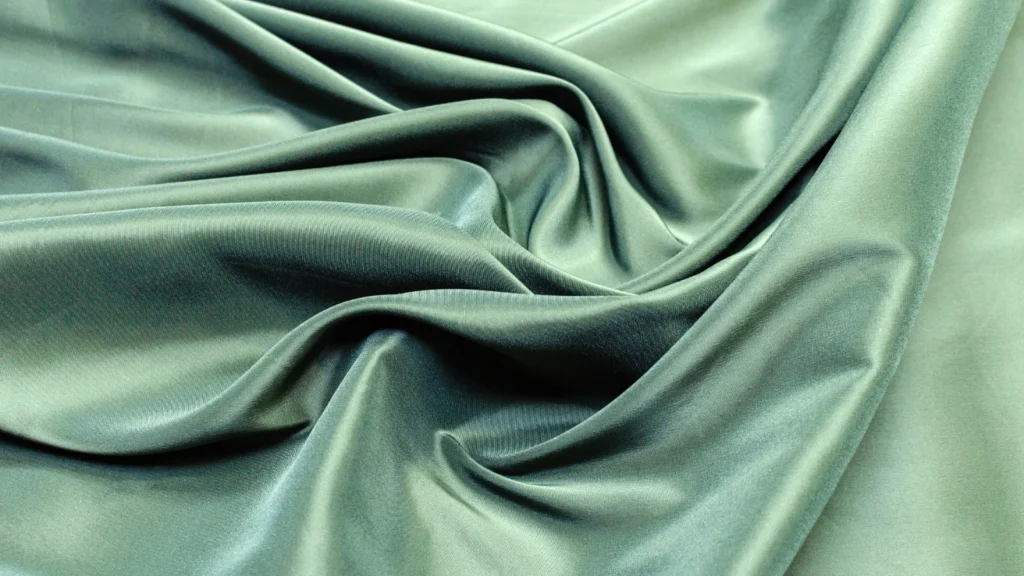
Yes, viscose fabric is suitable for many uses. It feels soft, looks nice, and is comfortable to wear anytime and in every season. It works well in both clothing and home items like curtains or bed sheets. It’s also pretty affordable, making it a good choice for people who want style without spending too much or disturbing their budget.
What Thing to Consider When You Purchasing Viscose Fabric?
When buying viscose fabric, it’s important to check a few simple things.
First, feel the fabric to ensure its texture is soft and smooth. Viscose can wrinkle easily, so look for a blend if you want something with less care. Check if it’s strong enough, especially when wet since pure Viscose can weaken with moisture. Also, see if the color looks rich and even, as Viscose takes dye very well. Always remember! To read care labels as much as possible because some types may need gentle washing. Lastly, consider how you plan to use it, such as clothing, curtains, or anything else, to pick the right type and save your hard-earned money.
Tips to Care For Viscose Fabric:
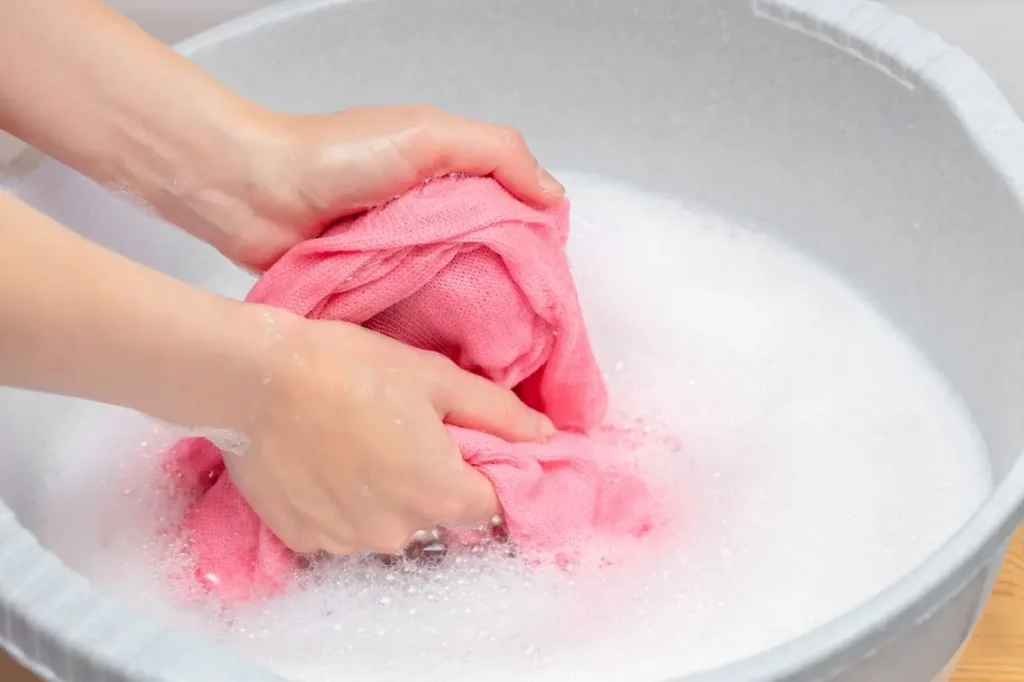
It’s important to care of your viscose-made products properly to prevent degradation in quality. Here are the smartest and easiest tips for caring for viscose fabric.
- Washing: Wash your viscose accessories with your hands, or try using the delicate setting with cold water.
- Drying: You need to avoid too much heat. Just drying flat should have been to prevent the item from shrinking.
- Ironing: It’s necessary to keep in mind that ironing in low heat while the fabric is slightly damp.
These simple care tips for viscose fabric will last much longer and stay in good shape.
Did You Know? Surprising Facts and Stats About Viscose Fabric
Viscose fabric is more popular than many people realize. As of recent market studies. The multinational viscose fiber market was valued at over USD 13 billion in 2023, and it’s expected to grow steadily, reaching around USD 17 billion by 2028. This growth is driven by high demand in fashion, home textiles, and even medical products. Viscose makes up a large share of the global rayon market, with countries like China, India, and Indonesia leading in production. It’s also gaining fame as an affordable, silk-like option for eco-conscious brands. Over 5 million tons of Viscose are produced yearly, proving how essential and in-demand this fabric has become across various industries.
The Last Statement:
Every fabric and material has a deep-dive chapter, and every page tells its own new story, which surprises you and allows you to do things. That you had never thought about. In this blog, we will cover all the important aspects of Viscose.
In short, viscose fabric is a versatile, affordable, and modern fabric that continues to grow in popularity across fashion and other industries. With its silk-like feel, eco-friendly options, and vast range of uses, Viscose remains a top choice for brands and consumers looking for comfort, quality, and value. So, if you are surprised by the advantages and quality of this fabric, utilize it in your fashion and daily life to make your journey more comfortable and easy. So, did you get your answers about whether Viscose Fabric Good or Bad?
FAQ’s: Frequently Ask Question
Q1: Viscose Fabric for Summer And Winter?
A: Yes, Viscose is excellent for both! It’s light and breathable for summer, but when layered or blended, it works well in winter, too.
Q2: What Kind of Fabric is Viscose?
A: Viscose is a semi-synthetic fabric made from natural wood pulp, offering a soft, silky feel.
Q3: Viscose Fabric Made From?
A: It’s made from cellulose, which is taken from wood pulp—usually from trees like beech, pine, or bamboo.
Q4: A Short Viscose Fabric Definition?
A: Viscose is a soft, smooth, silk-like fabric made from plant-based cellulose.
Q5: Is Viscose Fabric Breathable?
A: Viscose is breathable and helps keep you cool, making it great for warm weather.
Q6: How to Wash Viscose Fabric Safely?
A: Wash by hand or use a gentle machine cycle with cold water. To prevent damage, avoid wringing or twisting.
Q7: Is Viscose Hard To Maintain?
A: Not really! It just needs gentle care—avoid high heat and harsh detergents, and always check the label for the best results.
If you want to learn more interesting facts and the history of other fabrics, You can browse more topics on Oskar Jacket!


